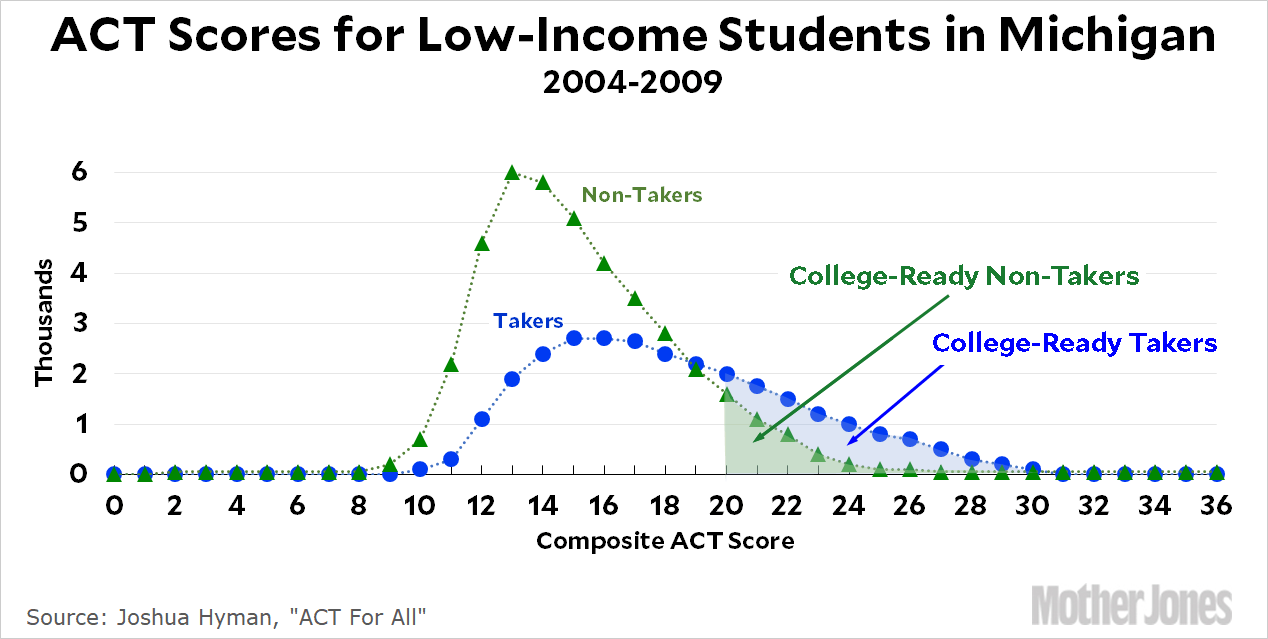Reihan Salam points today to an interesting paper written a couple of years ago. The question at hand is: how do we get more low-income students to go to college? Part of the answer is to get more low-income students to apply to college. And the first step to accomplishing that is for them to take either the SAT or ACT college entrance exams.
About a decade ago several states changed the way these exams worked. Instead of requiring students to pay up-front for them and then show up on a weekend to take the test, they prepaid for every student to take the test and then administered it during school hours. In Michigan, this resulted in nearly every high-school student taking the ACT. So how many kids who otherwise wouldn’t have taken the ACT ended up scoring as college-ready? Joshua Hyman applied a bit of arithmetic to the before-and-after results and came up with this:

Hyman uses a score of 20 as the cutoff for college-ready. The area under the blue line is the number of test-takers who scored 20 or higher. The area under the green line is the number of students who otherwise wouldn’t have bothered with the test but ended up scoring 20 or higher when they did. The green area is almost half the size of the blue area. These are all students who qualified for college but never would have known it.
This means that among low-income students, the supply of college-ready grads increased nearly 50 percent simply by having everyone take the college entrance exam. The bottom line, it turns out, is that there are plenty of good students among the poor who never take the ACT because (a) college just hasn’t occurred to either them or their high-school counselor or (b) even the small cost of taking the exam is a barrier to trying.
ACT (or SAT) for all seems like a pretty efficient, low-cost way of ensuring that, at the very least, everyone who is college-ready is identified as college-ready. It’s a good start to getting more low-income students into college.













